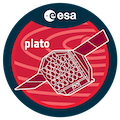Speaker
Description
The GAIA space mission has revolutionized our understanding of the Milky Way, offering an unparalleled data set for over 1 billion stars and celestial bodies, thereby setting a new benchmark for precision in stellar and exoplanetary science. This advancement is particularly synergistic with the goals of the PLATO (PLAnetary Transits and Oscillations of stars) mission, which aims to discover and characterize Earth-like planets in habitable zones and perform detailed analyses of host stars. In this context, our study leverages the latest Gaia Data Release 3 (DR3), incorporating photometric, astrometric, and spectroscopic data, to explore the kinematic and chemical signatures of 2611 exoplanet-hosting stars, thus providing insights into their formation histories and evolutionary states, areas of keen interest for PLATO. By integrating spectroscopic observations from GAIA's Radial Velocity Spectrometer, we reveal a distinct correlation between planetary mass and stellar composition, where stars hosting massive planets exhibit higher metallicity but lower α-element abundances compared to those with smaller planets. This chemical dichotomy underscores the critical role of stellar metallicity in planet formation, a parameter that PLATO's precise stellar characterizations will further illuminate. Our kinematic analysis uncovers significant differences in galactic space velocity and orbital parameters between systems with small and giant planets, reflecting underlying age discrepancies. Specifically, we identify a statistically significant variation in Zmax (0.06 kpc) and eccentricity (0.03), suggesting that planetary system architecture may be influenced by the age and dynamical history of the host star. This finding aligns with PLATO's objective to determine accurate ages for host stars, offering a deeper understanding of planetary system evolution. Furthermore, employing MIST-MESA isochrone models to estimate stellar ages, we find that stars hosting giant planets are generally younger than those with smaller planets. This age trend not only supports the core-accretion theory for giant planet formation but also parallels the broader narrative of chemical and dynamical evolution within the galaxy, topics that are central to the PLATO mission's exploration of exoplanetary systems and their stellar environments. In conclusion, our study bridges GAIA's groundbreaking dataset with the forthcoming endeavors of the PLATO mission, highlighting the importance of integrated stellar and exoplanetary research in unraveling the complexities of planet formation and evolution within our galaxy.

